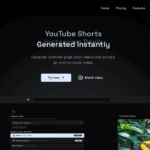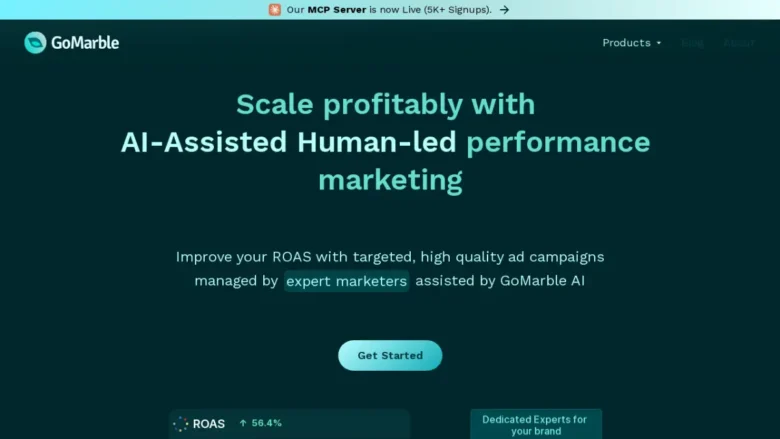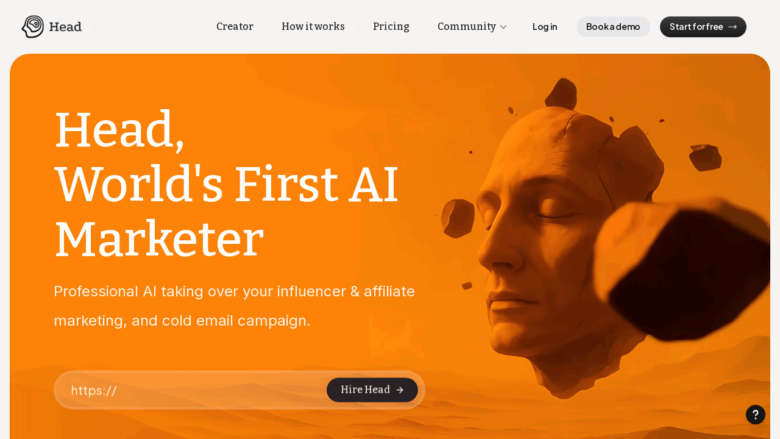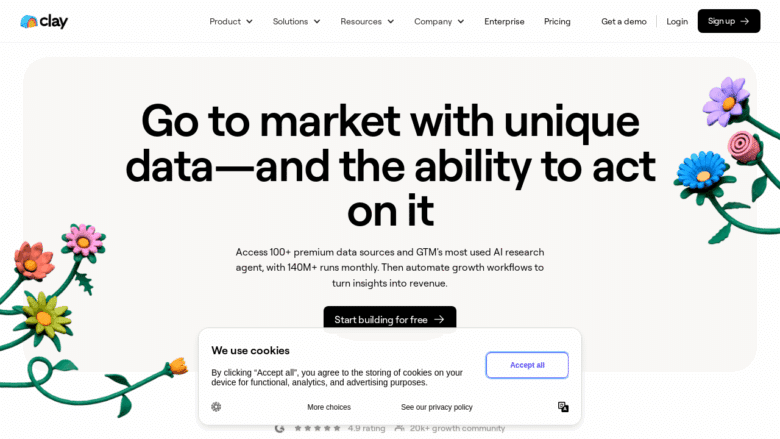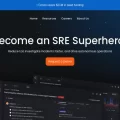Converting long-form content into snackable, attention-grabbing clips has traditionally been a time-consuming process requiring specialized editing skills. Enter Overlap.ai, a Y Combinator-backed platform that’s turning heads in the AI video marketing space with its promise of multimodal intelligence and streamlined content repurposing. This comprehensive technical review dives deep into what makes Overlap.ai tick, how it stacks up against competitors, and whether it delivers on its bold claims of transforming video marketing workflows.
What is Overlap.ai? Understanding the Core Technology
Overlap.ai positions itself as more than just another video editing tool—it’s a sophisticated AI agent platform that understands and processes video content the way humans do. At its foundation lies a proprietary multimodal AI system capable of seamlessly analyzing text, images, video, and audio simultaneously. This technical architecture allows the platform to comprehend context, identify key moments, and make intelligent editing decisions without human intervention.
The platform’s flagship Video Marketing Agent stands out for its ability to transform long-form content like podcasts, webinars, and streams into platform-optimized short clips. Unlike basic trimming tools that simply cut video at predetermined timestamps, Overlap’s AI analyzes content for meaningful segments, engaging moments, and logical breakpoints—mimicking the decision-making process of an experienced video editor.
Technical Capabilities and Feature Deep-Dive
Multimodal Content Analysis
Overlap’s core strength comes from its advanced vision large language model, which the company claims outperforms OpenAI’s GPT-4o on 16 of 17 industry benchmarks. This sophisticated neural network architecture enables several key capabilities:
Contextual Understanding: The AI comprehends spoken content, visual elements, and their relationship, allowing it to identify truly meaningful moments.
Semantic Segmentation: Rather than arbitrary cuts, the system identifies natural breakpoints in conversations and presentations.
Emotional Intelligence: The platform can detect engagement peaks through voice tone analysis, facial expressions, and content delivery.
Automated Video Transformation Workflows
For content creators and marketing teams, Overlap.ai’s technical infrastructure enables several workflow automations:
Long-Form to Short-Form Conversion: Automatically transform podcasts, broadcasts, or streams into bite-sized social media clips while maintaining narrative coherence.
Horizontal to Vertical Adaptation: Using advanced face detection and content awareness algorithms, the platform converts landscape videos to portrait format without awkward cropping or lost context.
Resolution and Length Flexibility: The system handles videos up to 8 hours long and 8K resolution, processing high-quality inputs without compression artifacts.
Integration and Deployment Infrastructure
Overlap.ai offers flexible deployment options to accommodate varying technical requirements:
Cloud-Based Processing: Most users leverage Overlap’s cloud infrastructure for processing, with automatic monitoring of connected accounts.
On-Premises Solutions: For organizations with strict security requirements, Overlap offers open-sourced models that can run entirely on local infrastructure.
API Access: Developers can integrate Overlap’s capabilities directly into their products through comprehensive API endpoints.
Content Storage and Management Architecture
The platform includes robust content management capabilities:
Unlimited Storage: There’s no cap on the amount of video that can be stored in the Overlap dashboard.
Advanced Permissions System: Team workflows are supported through granular access controls.
AI Search Functionality: Users can quickly locate specific content moments through natural language search capabilities.
Implementation Process and Technical Setup
Getting started with Overlap.ai involves a straightforward technical implementation process:
Source Connection: Users link their content sources (YouTube, Google Drive, or Dropbox).
Agent Configuration: The platform allows customization of the AI agent’s parameters to align with brand guidelines.
Automated Monitoring: Once configured, the system automatically processes new content as it’s uploaded to connected sources.
Output Customization: Users can define output specifications including aspect ratios, resolution, and platform-specific optimizations.
For enterprise users, Overlap offers personalized onboarding with custom agent development specifically tailored to unique use cases and brand requirements.
Performance Metrics and Technical Benchmarks
According to Overlap.ai’s internal data, users experience significant performance improvements:
12x Impression Boost: The average user reportedly sees a 12x increase in total social media impressions within three months of implementation.
Workflow Efficiency: The automated process reduces video editing time by up to 85% compared to traditional methods.
Scale Capabilities: The system can process videos of virtually any length, with documented success handling 8-hour inputs and 8K resolution content.
These metrics suggest Overlap.ai delivers substantial technical performance improvements over manual editing processes, particularly for teams producing high volumes of video content.
Technical Comparison with Leading Competitors
The AI video marketing landscape has become increasingly competitive, with several platforms offering similar functionality. Here’s how Overlap.ai stacks up against major competitors on key technical parameters:
Overlap.ai vs. Vidyo.ai
Vidyo.ai has established itself as a popular option for social media clip generation. Key differences include:
AI Model Architecture: Overlap claims superior multimodal understanding compared to Vidyo’s more traditional approach.
Processing Capabilities: Overlap handles longer videos (up to 8 hours vs. Vidyo’s 2-hour limit).
Customization Depth: Overlap offers more extensive brand customization options through dedicated agent development.
Deployment Options: Overlap provides on-premises options, while Vidyo is primarily cloud-based.
Overlap.ai vs. OpusClip
OpusClip targets similar use cases but differs in several technical aspects:
Content Analysis: Overlap’s multimodal system provides more nuanced understanding compared to OpusClip’s primarily text-based analysis.
Vertical Adaptation: Overlap’s face detection algorithms deliver more sophisticated horizontal-to-vertical transformation.
Integration Ecosystem: Both offer robust integration options, though Overlap emphasizes developer API access.
Overlap.ai vs. Trimmr.ai
Trimmr.ai represents a newer entrant focusing on simplicity. Key technical differences include:
Processing Sophistication: Overlap employs more advanced AI models for content understanding.
Enterprise Features: Overlap offers more comprehensive team collaboration tools and permissions.
Security Infrastructure: Overlap’s open-source option for local deployment provides advantages for security-conscious organizations.
Overlap.ai vs. Reap
Reap positions itself as an AI video repurposing tool with slightly different emphasis:
Model Training: Overlap’s custom-trained agent approach differs from Reap’s more generalized model.
Performance Claims: Overlap’s benchmark claims (outperforming GPT-4o) exceed Reap’s published performance metrics.
Technical Flexibility: Overlap accommodates higher resolution and longer content than Reap’s documented capabilities.
Technical Strengths and Limitations
Based on our analysis, Overlap.ai demonstrates several notable technical strengths:
Strengths
Advanced Multimodal Understanding: The platform’s ability to process multiple content types simultaneously enables more contextually aware editing.
Customization Capabilities: The custom agent development approach allows for highly tailored implementations.
Security Consciousness: Open-source options for local deployment address concerns about proprietary content security.
Scalability: The platform handles extremely large files and high-resolution content effectively.
Developer-Friendly: API access enables integration into existing workflows and custom applications.
Limitations
Resource Requirements: The sophisticated AI models likely require substantial computational resources, potentially impacting processing times.
Implementation Complexity: The custom agent approach, while powerful, may require more setup time than simpler alternatives.
Cost Structure: Advanced features may come at premium price points compared to more basic competitors.
Optimal Use Cases and Technical Applications
Overlap.ai’s technical architecture makes it particularly well-suited for specific scenarios:
Content Creator Studios
For professional content creation teams producing multiple long-form videos weekly, Overlap’s automation capabilities provide significant workflow efficiencies. The ability to maintain consistent brand styling across all clips ensures cohesive social media presence.
Enterprise Marketing Departments
Organizations with strict brand guidelines benefit from Overlap’s customizable outputs. The permission system allows marketing leaders to maintain quality control while enabling team members to leverage automation.
Security-Conscious Organizations
For industries like finance, healthcare, or government where content security is paramount, Overlap’s open-source, locally-deployable option provides technical safeguards against data exposure.
High-Volume Podcast Networks
Media companies producing multiple podcast episodes weekly can leverage Overlap’s automated monitoring to ensure consistent clip generation without manual intervention.
Implementation Best Practices for Technical Teams
When deploying Overlap.ai, technical teams should consider these implementation strategies:
Content Source Organization: Structure content repositories logically before connecting to maximize automated processing effectiveness.
Agent Training Inputs: Provide clear examples of preferred clip styles during setup to optimize AI performance.
Output Testing Workflow: Establish a quality control process for initial outputs until the system is properly calibrated.
Integration Planning: Consider API implementation for seamless incorporation into existing content management systems.
Performance Monitoring: Track key metrics like impression rates and engagement to quantify ROI.
The Future of AI Video Marketing Technology
Overlap.ai represents the current state of AI video marketing technology, but this rapidly evolving field continues to advance. Several technical trends suggest where platforms like Overlap may develop:
Real-Time Processing: Future iterations may enable immediate clip generation during live broadcasts.
Advanced Style Transfer: More sophisticated visual styling beyond basic color grading and watermarking.
Cross-Platform Optimization: AI-driven customization specific to each social platform’s algorithm preferences.
Interactive Element Integration: Automated addition of polls, questions, and other engagement elements.
As foundation models continue to improve, we can expect even more sophisticated content understanding and editing decisions from platforms in this category.
Key Long-Tail Keywords for Video Marketing Teams
Content teams seeking to maximize the value of automated video marketing tools should consider these specialized search terms when researching solutions:
AI-powered video clip generator for podcasts
Automated horizontal to vertical video conversion
Custom-trained AI video marketing agents
Long-form to short-form video transformation
Social media video automation for marketing teams
High-resolution video processing with AI
Multimodal video content analysis
AI video editing for brand consistency
Video content repurposing automation
Security-focused AI video marketing platforms
Who Should Consider Overlap.ai?
Based on our technical analysis, Overlap.ai appears best suited for:
Mid to large-size marketing teams producing regular video content
Organizations with strong brand identity requirements
Content creators seeking to maximize social media reach from existing long-form content
Technical teams comfortable with sophisticated AI implementation
Security-conscious organizations requiring data privacy guarantees
The platform’s emphasis on customization and advanced AI capabilities suggests it delivers most value to users with consistent, high-volume video production needs rather than occasional content creators.
Final Assessment
Overlap.ai represents an impressive technical achievement in the AI video marketing space. Its multimodal understanding capabilities, flexible deployment options, and customization depth set it apart from many competitors. For organizations producing substantial video content and seeking to maximize social media impact without expanding editing teams, the platform offers compelling technical advantages.
The claimed performance improvements (12x impression boost) would provide significant ROI if consistently achievable, though results likely vary based on content type and implementation quality. As AI video marketing tools continue evolving, Overlap’s approach of custom-trained agents rather than one-size-fits-all solutions positions it well for organizations with specific brand requirements and technical needs.
Frequently Asked Questions About Overlap.ai
What is Overlap.ai and how does it work?
Overlap.ai is a Y Combinator-backed AI video marketing platform that uses multimodal intelligence to automatically transform long-form content like podcasts, webinars, and streams into platform-optimized short clips. The technology analyzes text, images, video, and audio simultaneously to identify key moments and make intelligent editing decisions without human intervention. Its proprietary Vision Large-Language-Model powers contextual understanding, semantic segmentation, and emotional intelligence capabilities.
How does Overlap.ai compare to other AI video tools like Vidyo.ai?
Overlap.ai differentiates itself from competitors like Vidyo.ai through several key features: it handles longer videos (up to 8 hours vs. Vidyo’s 2-hour limit), offers more extensive brand customization through dedicated agent development, provides on-premises deployment options for security-conscious organizations, and claims superior multimodal understanding with its AI model that outperforms OpenAI’s GPT-4o on 16 of 17 industry benchmarks.
What technical capabilities does Overlap.ai offer for video marketing?
Overlap.ai’s technical capabilities include automated long-form to short-form video conversion, intelligent horizontal to vertical adaptation using face detection algorithms, processing of videos up to 8K resolution, content-aware clip selection based on engagement peaks, unlimited storage in the dashboard, advanced permissions system for team workflows, and AI search functionality to locate specific content moments through natural language search.
Can Overlap.ai handle high-resolution video content?
Yes, Overlap.ai can process videos up to 8K resolution without significant compression artifacts. The platform is designed to maintain high quality throughout the transformation process, making it suitable for professional content creators who prioritize visual fidelity in their marketing materials.
What ROI can businesses expect when implementing Overlap.ai?
According to Overlap.ai’s internal data, users experience an average 12x increase in total social media impressions within three months of implementation. The platform also reduces video editing time by up to 85% compared to traditional methods. While results may vary based on content type and implementation quality, these metrics suggest significant potential ROI, particularly for organizations producing high volumes of video content.
Is Overlap.ai suitable for security-conscious organizations?
Yes, Overlap.ai offers flexible deployment options to accommodate varying security requirements. While most users leverage Overlap’s cloud infrastructure for processing, the platform also provides open-sourced models that can run entirely on local infrastructure for organizations with strict security protocols. This makes it appropriate for industries like finance, healthcare, or government where content security is paramount.
How does Overlap.ai’s multimodal AI technology work?
Overlap.ai’s multimodal AI system analyzes text, images, video, and audio simultaneously to comprehend content holistically. The platform’s Vision Large-Language-Model understands spoken content, visual elements, and their relationships, allowing it to identify truly meaningful moments. The system detects natural breakpoints in conversations and presentations while analyzing engagement peaks through voice tone, facial expressions, and content delivery for intelligent clip selection.
What types of videos can be processed with Overlap.ai?
Overlap.ai can process virtually any type of long-form video content, including podcasts, webinars, interviews, conference presentations, educational content, product demonstrations, and livestreams. The system is particularly effective with conversational content but works with any video that would benefit from being repurposed into shorter, platform-specific clips for social media distribution.
How does the implementation process work for Overlap.ai?
Implementation involves four key steps: (1) connecting content sources like YouTube, Google Drive, or Dropbox; (2) configuring the AI agent’s parameters to align with brand guidelines; (3) setting up automated monitoring to process new content as it’s uploaded; and (4) customizing output specifications including aspect ratios, resolution, and platform-specific optimizations. Enterprise users receive personalized onboarding with custom agent development tailored to their specific use cases.
Can Overlap.ai integrate with existing content workflows?
Yes, Overlap.ai offers comprehensive API endpoints that allow developers to integrate its capabilities directly into existing products and workflows. This makes it possible to incorporate Overlap’s AI video processing into content management systems, marketing automation platforms, and custom applications, enabling seamless workflow integration for technical teams.
What are the limitations of Overlap.ai compared to manual video editing?
While powerful, Overlap.ai has some limitations compared to human editors. The sophisticated AI models likely require substantial computational resources, potentially impacting processing times. The custom agent approach, while powerful, may require more setup time than simpler alternatives. Additionally, the platform may come at premium price points compared to more basic competitors, though this is offset by the workflow efficiencies gained.
Is Overlap.ai better for individual content creators or enterprise teams?
Overlap.ai appears best suited for mid to large-size marketing teams producing regular video content, organizations with strong brand identity requirements, and content creators with consistent, high-volume video production needs. While individuals can benefit from the platform, its emphasis on customization, team workflows, and advanced AI capabilities delivers the most value to users with ongoing content production rather than occasional creators.
How does Overlap.ai handle vertical video adaptation for social media?
Overlap.ai uses advanced face detection and content awareness algorithms to convert landscape videos to portrait format without awkward cropping or lost context. The system intelligently identifies the most important visual elements in each frame and ensures they remain properly framed in vertical outputs, making the content appear naturally suited for platforms like TikTok, Instagram Reels, and YouTube Shorts.
What types of customization are possible with Overlap.ai’s outputs?
Overlap.ai allows extensive customization of video outputs, including aspect ratio optimization for different platforms, resolution settings, branding elements like logos and watermarks, custom intro and outro sequences, color grading adjustments, and caption styling. For enterprise users, the platform offers dedicated agent development to create highly specialized transformation rules that align perfectly with brand guidelines.
How does Overlap.ai’s pricing structure work?
While specific pricing details weren’t covered in the review, Overlap.ai likely follows industry standards with tiered subscription models based on usage volume, processing capabilities, and advanced features. Enterprise customers with custom agent development requirements would presumably have personalized pricing structures based on their specific implementation needs and scale requirements.




